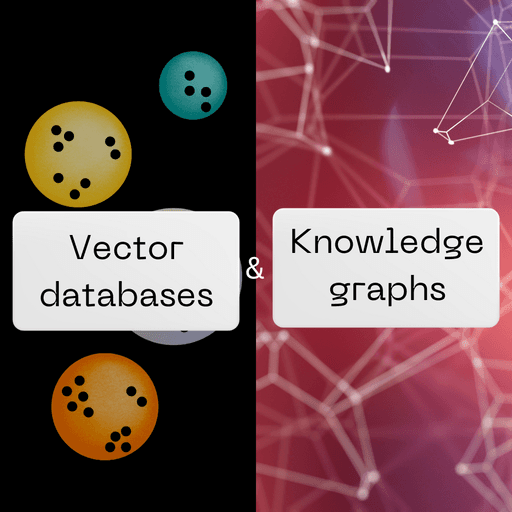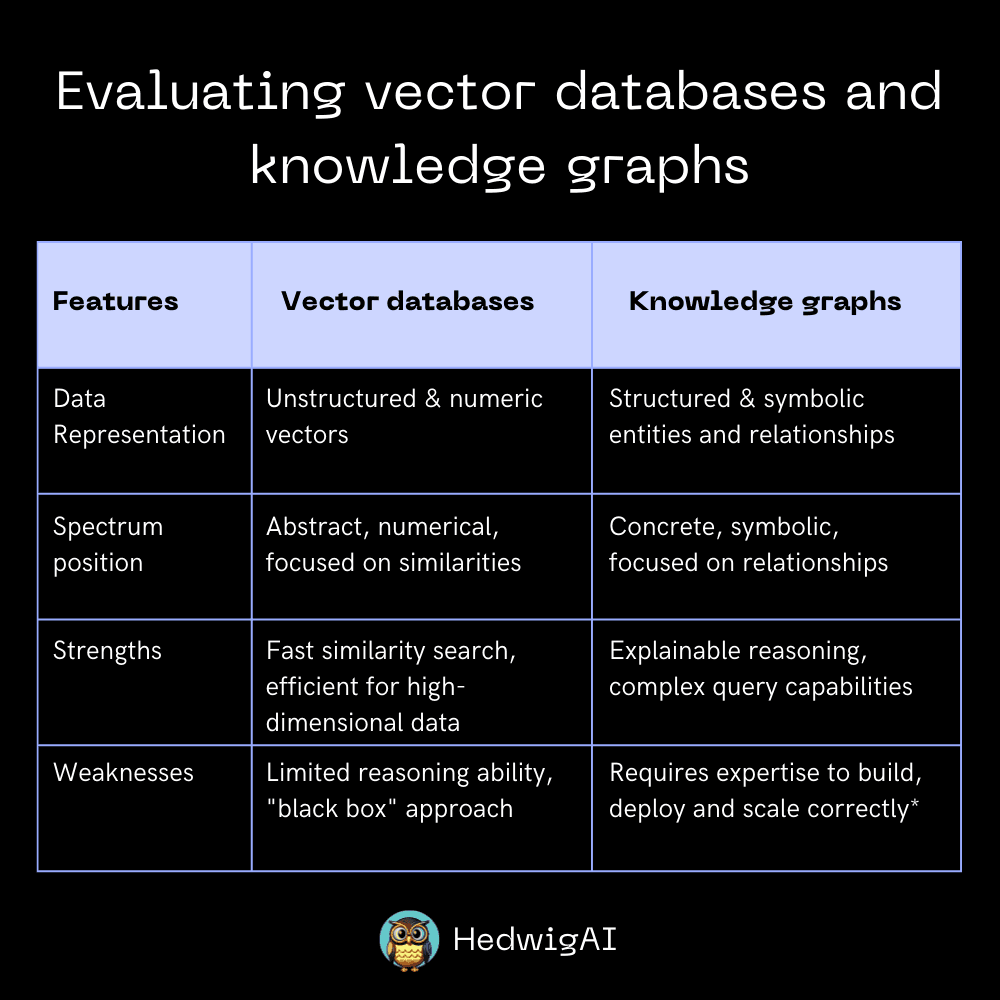Vector databases and knowledge graphs
This blog post helps explore the applications of vector databases and knowledge graphs while building AI tools, applications and use cases. Overall, vector databases are more suitable for simpler, faster retrieval versus knowledge graphs are for deeper, complex insights, recommendations and analytics.
Feb 15, 2024

Imagine you're building an AI assistant for a movie buff. They ask, "What are the best sci-fi movies similar to Blade Runner?" Would you tell them every sci-fi movie ever made, or use data to recommend hidden gems?
This is where vector databases and knowledge graphs come in. They're like data treasure chests, each holding valuable information, but they unlock in different ways. Let's explore when to use each:
Vector Databases: The Speedy Search Engines for AI
Think of a vector database as a giant map with landmarks (data points) represented by tiny arrows (vectors). These arrows point in directions that reflect the "meaning" of the data.
Use cases:
Similarity searches: Find similar items based on features, like recommending movies based on genre, actors, or user preferences (think Netflix!).
Personalization: Tailor experiences for individual users. Imagine an AI assistant recommending restaurants based on your past orders and dietary preferences.
Clustering and anomaly detection: Group similar data points and identify outliers. This helps detect fraudulent transactions or equipment failures.
Pros:
Fast search: Find similar things instantly, making them great for real-time applications.
Scalable: Handle massive amounts of data efficiently.
Flexible: Work with various data types, like text, images, and numbers.
Cons:
Black box: You don't know the exact relationships between data points.
Limited reasoning: Can't answer complex questions that require understanding relationships.
Knowledge Graphs: The Linked Data Landscapes for AI
Imagine a knowledge graph as a city map, but instead of streets, it shows relationships between landmarks (entities). Streets are labeled with types of relationships, like "directed by" or "located in."
Use cases:
Answering complex questions: Imagine asking your AI assistant, "Who directed the movie Blade Runner and what other movies did they direct?" A knowledge graph can answer that!
Reasoning and inference: Draw logical conclusions from the data. For example, if a knowledge graph knows "Paris is in France" and "France is in Europe," it can infer "Paris is in Europe."
Knowledge representation: Model complex relationships and hierarchies in your data.
Pros:
Transparent: Relationships between data points are clear and understandable.
Reasoning power: Can answer complex questions and make inferences.
Explainable AI: You can understand how the AI arrived at its answer.
Cons:
Slower search: Finding specific information can take longer than in vector databases.
Less scalable: Can struggle with massive datasets.
Requires structured data: Works best with well-defined entities and relationships.
A quick summary is presented below:

Double leverage: combining vector databases and knowledge graphs
Sometimes, the best approach is a mix! Use a vector database for fast similarity searches and a knowledge graph for understanding relationships and reasoning. This hybrid approach can be particularly powerful for large, complex datasets.
Some examples:
Example 1: Personalized Travel Recommendations:
Vector Database: Identify users with similar travel preferences based on past trips, demographics, and online behavior. Find destinations with similar characteristics to those they enjoyed before.
Knowledge Graph: Connect destinations to cultural attractions, local events, and transportation options. Use this knowledge to personalize recommendations based on individual interests and preferences.
Example 2: Medical Diagnosis and Treatment:
Vector Database: Analyze medical images and patient data to identify similar cases and potential diagnoses.
Knowledge Graph: Represent relationships between symptoms, diseases, and treatment options. Use this knowledge to recommend the most effective treatments based on the specific patient's condition.
Example 3: Fraud Detection:
Vector Database: Identify suspicious transactions based on similarities to known fraudulent patterns.
Knowledge Graph: Connect entities involved in transactions (people, companies, accounts) to identify hidden networks and potential fraud rings.
Remember:
Think about your needs: What kind of questions do you want your AI to answer? Do you need fast searches or deep understanding?
Consider your data: Is it structured or unstructured? How much data do you have?
Don't be afraid to experiment: Try both approaches and see what works best for your specific use case.
And, if you think knowledge graphs fit some of your proposed use cases, be sure to check out what we do at HedwigAI and schedule a demo to see how we can help you.